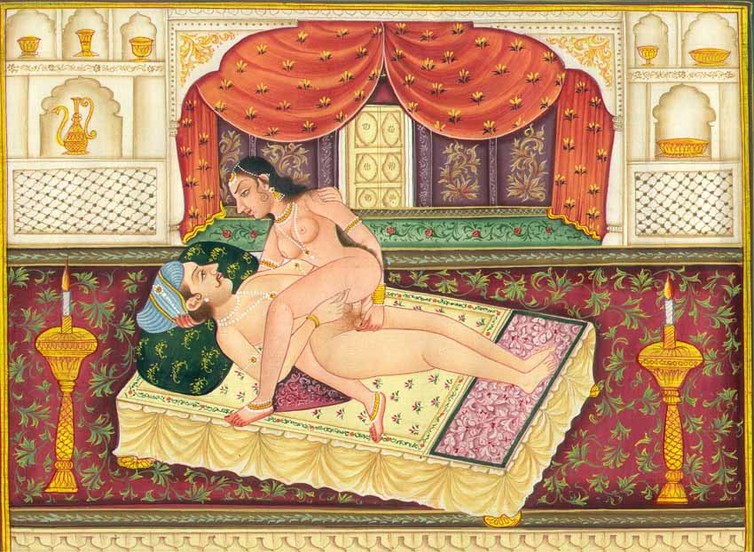by Kevin O’Gorman & Andrew MacLaren
The surge of popular interest in BDSM (bondage, domination, sadism and masochism) that has resulted from the Fifty Shades of Grey trilogy of novels has been something of a revelation. Beginning as texts whose relative marginality initially seemed ensured by both theme (BDSM) and format (online fan fiction), today they are so popular that millions are anticipating the adaptation of the second book to hit cinemas next week – just itching to get that mask out.
The original book set the record for the fastest-selling paperback ever, topping bestseller lists all over the world and being translated into more than 50 languages, eventually resulting in the first film adaptation in February 2015. It was the guilty pleasure holiday reading for many people in 2012.
Such popularity indicates a growing mainstream appetite for discussion of things that would previously be considered “deviant” pursuits. And understanding the ways in which countercultural pursuits such as BDSM gain mainstream popularity is important for commercial offerings that could benefit from incorporating them.

CHEESE AND WHIPS
The trend for BDSM tourism has both a past and an emerging future. The term BDSM only came into use in 1969, but unsurprisingly, the practices predate the term by at least 5000 years. Some of the oldest references to this kind of sexual behaviour are found in Sumerian cuneiform literature (c. 2500 BC) describing the ritual punishment, moaning and ecstasy in worship of the goddess of fertility, Inanna. And, in Ancient Greece, Plutarch, Xenophon and Plato all discussed examples of BDSM. One in particular was the cult of the diamastigosis where young men were flogged under the guidance of priestesses whilst trying to remove cheeses from an altar. Well, everyone needs a hobby.
Popularisation came with Hindu guide to love and desire, the Kama Sutra (from “kāma” the Hindu goal of desire and “sūtra”, a collection of aphorisms), written in Sanskrit by the Vedic philosopher Vātsyāyana. Historians believe that the text was probably composed between 400 BCE and 200 CE and collected into its present form in the 2nd century CE. More than just a sex manual, it is a guide to gracious and virtuous living and focuses on the nature of love, what triggers desire, what sustains it, and how and when it is good or bad. It also explains different kinds of discipline during sex, undoubtedly contributing to the spread of many sexual practices, including BDSM, around the globe.

In contrast to this rich history, in the UK today just walking past an Ann Summers shop might make one feel a bit prudish and guilty. Yet we are a changing nation. Christian Grey and friends have smashed open Pandora’s box, and it’s full of whips, tethers and blindfolds.
WHO’S THE DEVIANT?
Our particular interest here is in BDSM as an emergent tourism product. From a sociological perspective, the nature of deviancy represents a paradox. We tend to view the participants of practices such as bondage from a distance and consider them to be deviants. But their apparent deviancy is structured and normal for them – they have a community, an identity within that community that they seek to uphold, and a set of social rules to which they adhere.
But as their community grows and others enter, these others are free of the burden of the social structures of their own, mainstream, community, and therefore free to be truly deviant from themselves. The notion of being “apart together” is facilitated by tourism products and, as BDSM enters the public consciousness, it registers as something people are willing to do as a means of “escaping” – something businesses are keen to package as a valuable proposition to customers.
Just like BDSM, other types of risk, thrill, pain and pleasure have all been commodified and popularised into tourist attractions. We don’t bat an eyelid at the idea that people regularly jump out of a perfectly serviceable aircraft, attach elasticated roped around their waists and fling themselves off bridges, or even tie two planks of wood to their feet and push themselves down snow-covered mountains.
But all of these were, at one time, no doubt considered deviant, minority pursuits. Today, tourism destinations in Scotland offer “Dirty Weekends”: dedicated Fifty Shades of Grey-themed package holidays. Similarly, sex-themed hotel rooms are becoming more common – hotels are acknowledging that sex is high on the agenda for certain guests. This echoes a long-established trend in the Far East for so-called love hotels.
As Rihanna sings: “Sticks and stones may break my bones, but chains and whips excite me.” BDSM is an activity that has entered the mainstream in recent years – and commerce is never far behind popular culture.
Feature Image (Mickey Mouse, cropped) by Ismael Alvarez
ABOUT THE AUTHOR
 This article by Kevin O’Gorman, Professor of Management and Business History, Heriot-Watt University and Andrew MacLaren, Lecturer in Marketing., Heriot-Watt University was originally published on The Conversation. Read the original article.
This article by Kevin O’Gorman, Professor of Management and Business History, Heriot-Watt University and Andrew MacLaren, Lecturer in Marketing., Heriot-Watt University was originally published on The Conversation. Read the original article.
